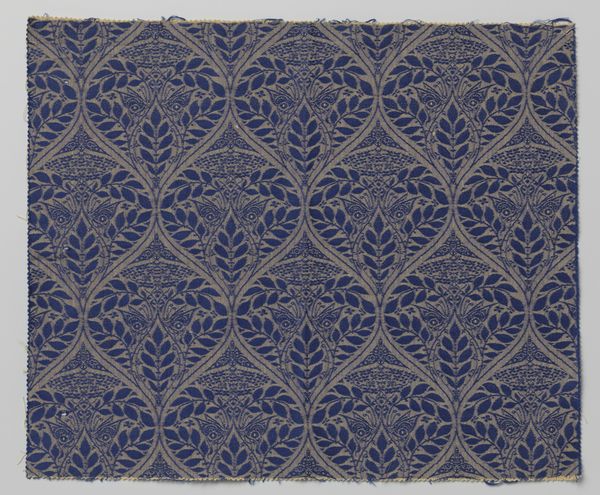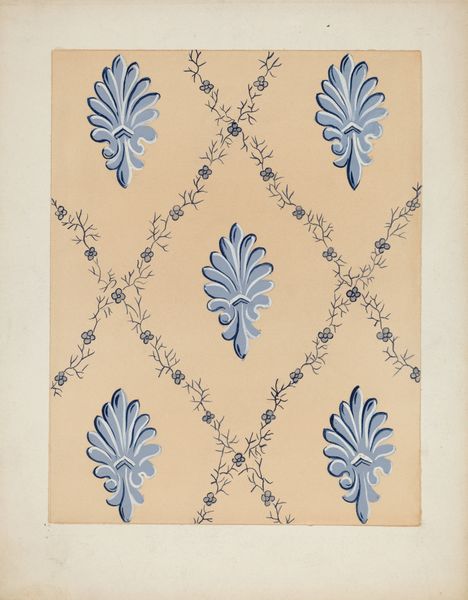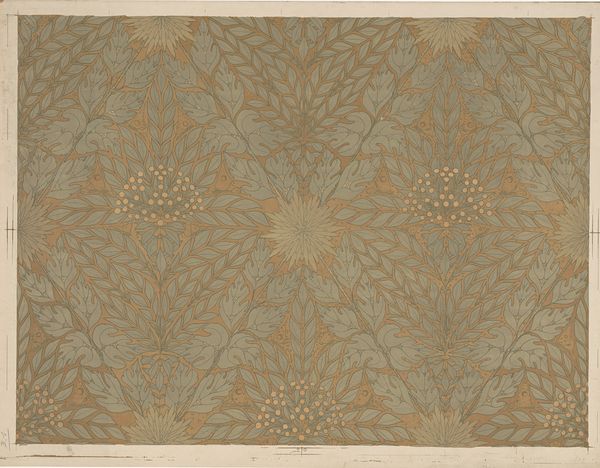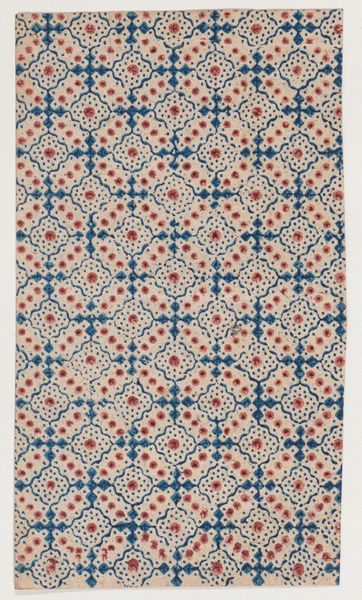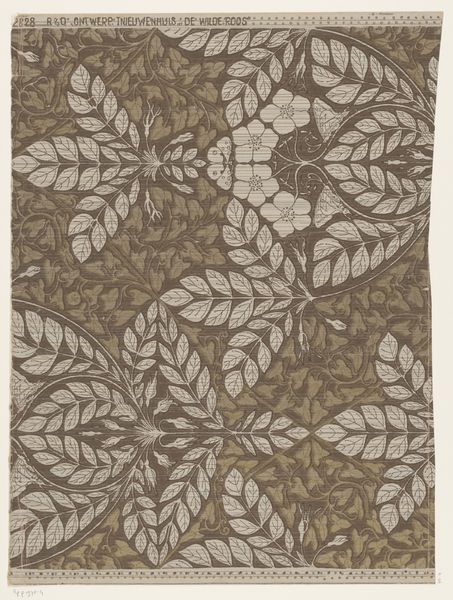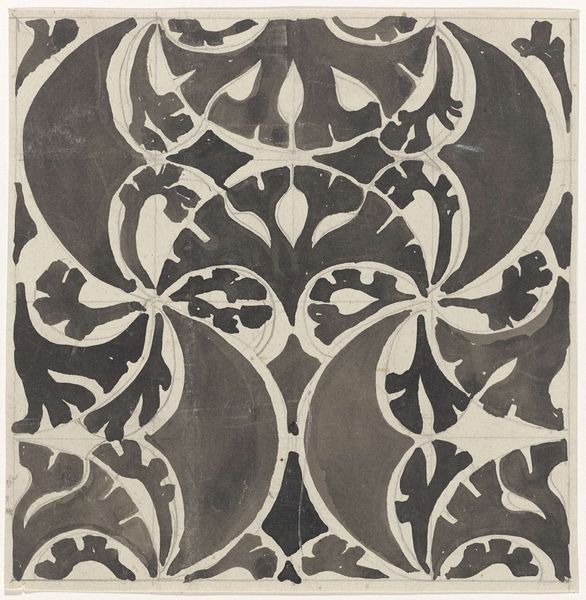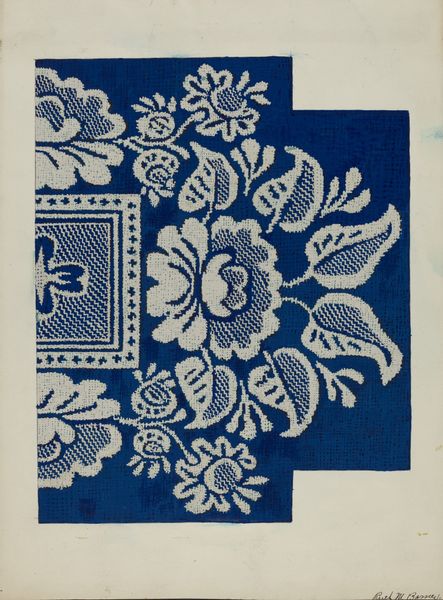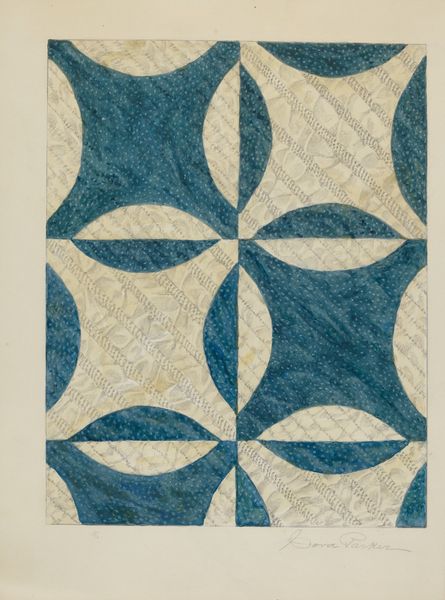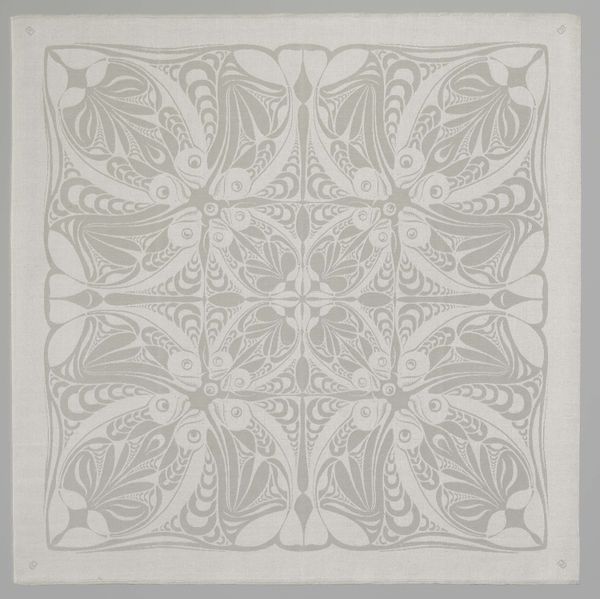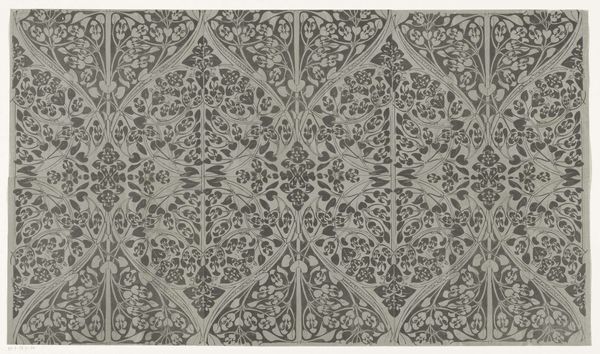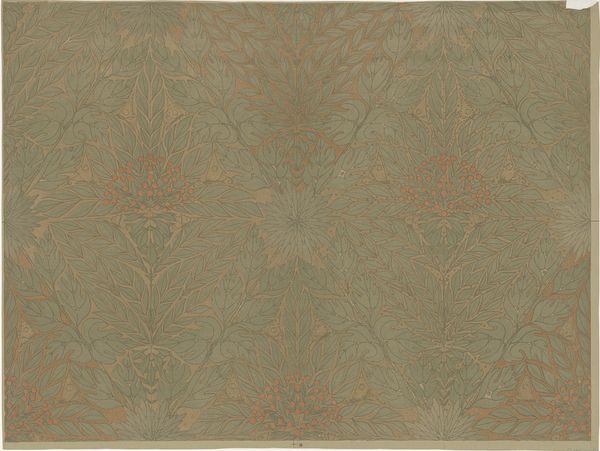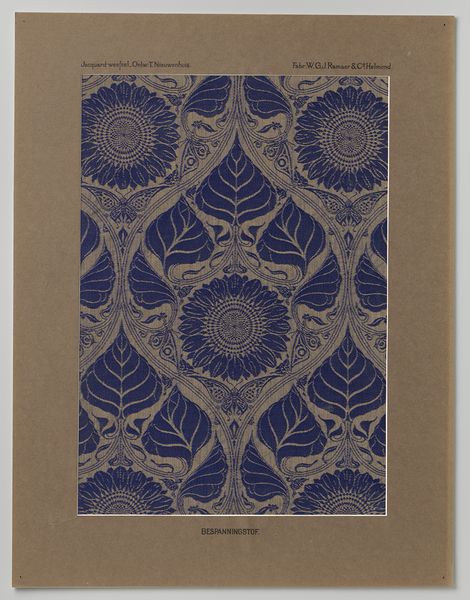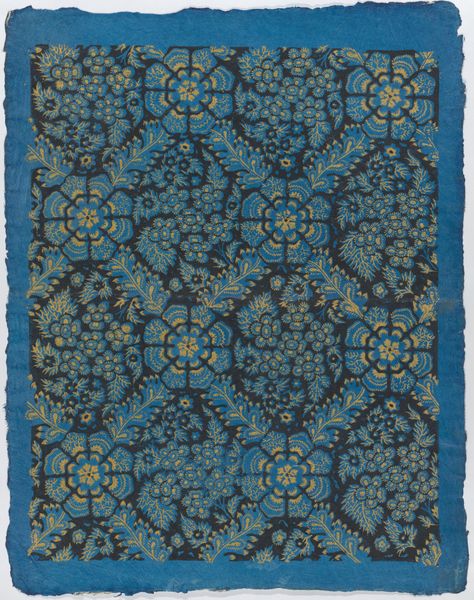
drawing, graphic-art, paper
#
drawing
#
graphic-art
#
organic
#
arts-&-crafts-movement
#
paper
#
organic pattern
#
repetition of pattern
#
vertical pattern
#
pattern repetition
Dimensions: height 560 mm, width 530 mm
Copyright: Rijks Museum: Open Domain
Curator: What a striking design. We're looking at "Ontwerp voor behang met bladeren en bloemen", a wallpaper design featuring leaves and flowers, crafted by Theo Nieuwenhuis between 1876 and 1951. It resides here at the Rijksmuseum. Editor: My first thought? Restful, almost meditative. The repetition creates a calming rhythm. The organic shapes contrasted against the flat blue background have such a peaceful impact. Curator: Yes, Nieuwenhuis was deeply embedded within the Arts and Crafts movement. Note the emphasis on the handmade, even in design intended for mass production. He's elevating the wallpaper to an art form, isn’t he? Editor: Absolutely. Consider the flower and foliage motifs. They resonate with enduring themes of nature, fertility, and even paradise. Each meticulously drawn leaf and delicate petal feels significant. Curator: It is so interesting that you mention this. Let's dive into the actual production. This is a drawing on paper, a preliminary sketch before it ever hit a printing press. You can see the artist’s hand so clearly in the design. Think about the labor involved, the decisions made about repeating patterns, the registration of colors... Editor: I also wonder if Nieuwenhuis intended to imbue the wallpaper with a specific emotional quality. The cool blue might represent tranquility. Perhaps he aimed to cultivate an environment that promotes relaxation, especially relevant considering the rise of industrial urban life at the time? Curator: The production angle is crucial too. Wallpaper production provided employment for many, including women, whose labor was often undervalued. Considering wallpaper as a commodity within the decorative arts and its affordability— who consumes this imagery matters deeply, which goes against high art. Editor: The symmetry and stylized rendering of flora makes it a potent visual language in its own right, one easily digestible regardless of education. The repeating floral elements create a harmonious whole which I cannot look away from. Curator: Such careful arrangement also allows this "simple" design to carry cultural weight by embedding familiar signs to convey different levels of messages for the home it adorns. We must recognize its social value through labor. Editor: This close examination reminds me that wallpaper can indeed offer insight into both art history and cultural identity. I now perceive beyond aesthetics, I see intent. Curator: Agreed. A convergence of hand and machine, designer and consumer, ultimately, material realities intertwine to reveal this artwork’s true depth.
Comments
No comments
Be the first to comment and join the conversation on the ultimate creative platform.
